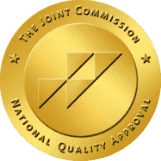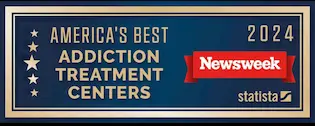Addiction in the Film Industry
- Home
- Addiction in the Film Industry
Table of Contents
- Addiction in the Film Industry
- Assistants in the Entertainment Industry and Addiction
- Other Factors in Drug Use
- Addiction in Executives in the Entertainment Industry
- Entertainers and Addiction in the Film Industry
- Celebrity Lifestyle and Addiction
- BOLLYWOOD AND ADDICTION
- THE IMPORTANCE OF OPENNESS AND DISCUSSIONS
- The Benefits That Come from Talking About Addiction
- BRAVE ACTORS WHO SHARE THEIR ADDICTION, RECOVERY, AND RELAPSE
- Addiction Treatment for the Film Industry
- Recovery in Hollywood
Addressing Addiction in the Film Industry: Challenges and Support
Addiction in the Film Industry
Celebrity Addiction
Celebrity drug addictions are an open secret in Hollywood. The exact cause of the abuse and addiction varies wildly. As unbelievable as it may seem, many people that seem to have the world at their fingertips still suffer from heavy depression. Celebrity drug use has steadily increased since the ’70s. However, so has drug use in the general public.
Celebrities also have a much higher level of access to drugs. The celebrity drug culture, which isn’t to say that all celebrities deal with drug abuse, has a trickle-down effect on the surrounding neighborhoods.
This article provides a detailed description of addiction in the film industry.
No One in the Film Industry is Immune to Addiction
Drug Use Shaped by Hollywood Culture
Addiction in Los Angeles
Addiction and homelessness are a severe socioeconomic issue in L.A. Skid Row, a poverty-stricken neighborhood in L.A. is thought to have over 80,000 people experiencing homelessness on any given night. Most of which are youths and runaways. In 2008, over 41,000 people were arrested for drug-related offenses. 37% of California students in grades 9-12 have admitted to trying marijuana, which is just shy of the national average.
These numbers serve to paint a stark picture of addiction in L.A. Addiction can be inherited. However, for many, it is a dependence that comes from a combination of trauma, exposure, and culture.
The exact number of people in L.A. struggling with addiction is unknown. In 2009, L.A. County listed the number as approx. 60,000.
Assistants in the Entertainment Industry and Addiction
Assistants have one of the most valuable roles in Hollywood. Multi-million-dollar studios, events, and personalities require people to help manage the thousands of moving parts required to accomplish this artistic endeavor. Assistants in Hollywood are put through a gauntlet of ever-changing demands. However, these constant stressors can open the door to severe substance abuse issues.
Why Do Assistants Experience Increased Substance Abuse?
Increased Anxiety and Depression
Abuse at Work
Threats of Replacement
Hollywood is a social machine. Every day, there are thousands of new people all looking for their shot at fame and fame-adjacency. This makes all but those at the very top replaceable. Assistants receive repeated threats of replacements for seemingly minor mistakes. This can lead to a lack of self-worth and a heightened sense of anxiety. What makes it worse is that in many situations, the severe punishment of being replaced is not equal to the reward for success.1
Hollywood assistants and other jobs considered “low-tier” in Hollywood can face extreme examples of being overworked, underpaid, and underappreciated. It’s no wonder Hollywood assistants are part of addiction in the film industry.
Other Factors in Drug Use
Several other factors play into the high rate of drug use in Hollywood. Here are the most common:
Low Wages
There are billions of dollars circling Hollywood any given day. But very small amounts make it into the hands of all but the highest-paid. This gap in wealth drives down working wages. Simply put, most people are willing to do hundreds of hours of hard work for less than the minimum wage just to get their foot in the door. Studio executives are willing to let them. Wage disparities in Hollywood have been a source of contention for years. As costs of living continue to rise, the average wage remains stagnant. Poverty increases the chance of someone using drugs, especially alcohol.
Poor Working Conditions
Hollywood is home to any number of dangerous production sets, unsafe situations, and volatile influences. These factors, combined with the additional anxiety, threats, or abuse, lead to poor working conditions. Many workers undergo trauma and injury during their jobs.
Stress and Demands
We’ve all heard stories about the demands of celebrities. Assistants, sound-technicians, novice actors, and more all face the brunt of these demands. Because Hollywood is full of big names, it’s almost impossible to tell which one demand may lead to a future career or is a mistake wait-ing to happen. The stress and anxiety of this system can rapidly degrade mental health.2
Addiction in Executives in the Entertainment Industry
Producers/Studio Executives
Stress and Burnout Leading to Addiction
Burnout affects almost every job in Hollywood. Plenty of A-list celebrities have been admitted into rehab for exhaustion, depression, and drug use. Studio executives’ draft deals, have meetings, run events, satiate big-name clients, etc. A studio executive may have better resources than lower-tier jobs, but the tasks they have to accomplish are almost astronomical in comparison. This constant franticness can lead to mental and physical exhaustion that leads to drug abuse. Executive burnout is a large part of addiction in the film industry.
Many Producers are Entertainers as Well
Pulling double duty as a producer and entertainer requires filling several roles. This leads to burnout. Chances are the actor playing the main character on your favorite long-running tv show is also a producer. This may explain why many actors who play long-running tv characters tend to step back from the public eye for an extended period.
Entertainers and Addiction in the Film Industry
Actors/Directors: Why Creative People are Prone to Addiction
Generally, actors and directors possess an artistic mindset. Studies have shown a connection be-tween artistry and drug use.3
Intelligence
Anxiety/Depression
Creative and intelligent people are acutely aware of their mortality and the continuous passing of time. Even at a young age, creatives may develop depressive thoughts regarding the monotony of everyday life. These thoughts are anxious in and of themselves. This creates a psychological need to collect experiences.4
Sensitivity
Thrill Seeking
Celebrity Lifestyle and Addiction
Stress
Money
Lack of Consequences
BOLLYWOOD AND ADDICTION
Bollywood, the entertainment organization of India, has long been rumored to have rampant drug use. Recently, the death of major Bollywood stars due to drugs has sparked a renewed interest in Bollywood substance abuse. Hollywood is not the only place dealing with addiction in the film industry.
Recent Deaths and Discussion Surrounding Those Deaths
Bollywood star Sushant Sing Rajput died in 2020 from suicide. Unfortunately, after his passing, it was discovered that he might be linked to the illegal drug trade. Following this controversy, actress Kangana Ranaut released a statement saying that 90% of Bollywood is dealing with drug use.
The use of drugs in Bollywood has been steadily increasing over the last 10 years.5 This shows that drug addiction is not limited to the American entertainment industry. It is a serious risk for any environment that imposes similar conditions.
THE IMPORTANCE OF OPENNESS AND DISCUSSIONS
The History of Hidden Addiction
Past Actors and How They Hid Their Addiction
Many entertainers have hidden or had their addiction hidden by studios. Here are a few:
Elvis Presley (1935-1977) – Elvis Presley died from a chemical concoction of prescribed medications. However, a drug overdose would’ve ruined his family-friendly image and cut into post-mortem record sales. The studios, coroners, and his family conspired to destroy the autopsy results to preserve his image.
Marilyn Monroe ( 1926-1962) – Is suspected of having died from barbiturates overdose. However, this finding was covered up by the local police department at the behest of her studio.
Judy Garland (1922-1969) – Died from a lifetime of barbiturate consumption. Most of which she became addicted as a child to keep up with rigorous studio demands.
In the “Golden age” of Hollywood, it wasn’t uncommon to be prescribed a variety of stimulates and depressives to meet studio expectations for workloads.6
The Benefits That Come from Talking About Addiction
For Young Actors
Having a comprehensive conversation about addiction with young actors can provide them the tools and information they need to avoid drug use when the opportunity arises. It also helps to un-romanticize drug use.
For Workers in the Entertainment Industry
Talking with entertainment workers about the prevalence of drug addiction and the stressors of the job can help set reasonable expectations.
For Fans
Ensuring that fans understand the full consequences of illicit drug use can help remove the stigma surrounding addiction recovery. Major fans of celebrities spend a lot of time consciously emulating them. Helping fans understand that what they see on screen isn’t the whole picture can help curb the craving to try drugs.
BRAVE ACTORS WHO SHARE THEIR ADDICTION, RECOVERY, AND RELAPSE
Dax Sheppard
Actor Dax Sheppard is outspoken about his journey to sobriety. In his late teens and early twenties, he suffered from substance use disorder. However, recently after 16 years of sobriety, he relapsed. He is reportedly back in therapy and again practicing sobriety. His openness towards his battles serves as a reminder that relapsing is a real potential. Relapsing is common. Seeking out help and committing to a new plan is vital to rejoining the fight against addiction.7
Jamie Lee Curtis
Actress Jamie Lee Curtis held a serious prescription drug addiction for over a decade before she realized she needed help. Now she routinely practices sobriety and urges others to do the same. She maintains an open and honest discussion about her addiction and how she overcomes it.8


Addiction Treatment for the Film Industry
Inpatient
Inpatient treatment is a 24/7 stay in a supportive medical environment. Medical professionals monitor patients and administer medication to help treat the symptoms of withdrawal. Inpatient care is a solid option for those that need intensive care.
Outpatient
Outpatient treatment is structured around weekly or monthly check-ins and long-term care plans. Outpatient treatment sometimes involves random drug tests to verify sobriety. Outpatient treatment is good for individuals who can’t leave their day-to-day life.
Detox
Detox treatment involves allowing the body to filter out illicit drugs and treating withdrawal symptoms. This process happens naturally but can be aided by medicinal practices.
Residential
Residential treatment resembles community living in which an emotional support system is paramount. Residential treatments often offer extended stays. This treatment option is good for those that need to entirely disconnect from their environment to begin the healing process.
Therapies
Therapies help build the emotional tools necessary to overcome addiction. They also create a safe space to gain a better understanding of addiction. Therapy is a great option for anyone living with substance abuse or mental illness.
Recovery in Hollywood
- https://variety.com/2019/tv/news/payuphollywood-poll-assistants-increased-substance-use-1203421558/
- https://variety.com/2019/tv/news/pay-up-hollywood-assistant-pay-1203370091/
- https://pubmed.ncbi.nlm.nih.gov/26070763/
- https://www.ncbi.nlm.nih.gov/pmc/articles/PMC3356869/
- https://thecreativemind.net/actors-and-addiction/
- https://www.history.com/news/judy-garland-barbiturates-hollywood-studio-drugs
- http://inspiringrehabstories.com/recovery/dax-shepard/
- https://www.insider.com/dax-shepard-relapsed-sober-addiction-painkillers-2020-9
- https://variety.com/2019/biz/features/jamie-lee-curtis-sober-recovery-addiction-1203392102/
Iris Healing® strives to be diligent and prompt in updating the information available on our website. Please note, however, that our treatment modalities and protocols are subject to change at any time. For the most up-to-date details regarding our treatment offerings or other protocols, please contact us: (844)663-4747





